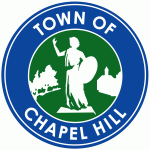
Town of Chapel Hill
2009 Mayor & Council Retreat
February 20-21, 2009
Discussion on Effective Groups
Discussion and Decision Making Process Guide
Highly effective groups agree, upfront, how they want to work and make decisions together. When everyone works from the same place, trust builds, difficult discussions are welcomed, and decisions can be made collaboratively.
Ground Rules
Below are the suggested ground rules for today’s retreat.
- Everyone speaks and respects the speaker
- Listen to one another
- Seek higher ground – acknowledge differences
- Conflict is OK; discuss the issue without personal attacks
- Assume everyone wants good to happen
- Respect each other’s opinions
- One conversation at a time
- The Rule of 2 – once you contribute you have to allow 2 other people to participate or 2 minutes to pass before you speak again
- Speak in first person
- Respect diversity of people and opinions
- Enough, Let’s Move On (ELMO)
- E-etiquette (no beeps, buzzes or bings)
Decision Making
As elected officials, you are a member of group elected to represent a constituency. You are not necessarily a group with common beliefs and vision. Traditionally, elected officials operate under the following agreements:
- Parliamentary procedures with the Mayor as parliamentarian
- Staff presentation on problem definition and options for solutions
- Council determination of criteria for decisions
- Majority vote on decisions
- Staff implementation
- Staff presentation on problem definition and options for solutions
In a perfect world, the process would be easy. However, complexities are often present and, there are challenges for elected bodies, for example:
- Interdependence and complexity of issues and constituencies
- Distrust between individuals and organizations
- Balancing individual and common good
- Empowered interest groups with different agendas
- Getting accurate, consistent information for informed decision making
- Balance between process and action
- Knowing when to conclude a discussion, decide and move on
- Differing philosophical foundations for decision making
- Dealing with conflict
The following steps are recommended as your guide for discussion today:
- Clearly define the issue
- Discuss the issue. Put all ideas on the table. Focus on interests not positions.
- Discuss the ideas considering the pros and cons. Look for areas of agreement and articulate your point of view as well as understand others’ points of view.
- After discussion, summarize the pending decision
- Test for agreement using the color card technique
Color Card Technique
The color card technique is a method to manage an efficient use of time in a meeting and is suggested for this retreat.
Following discussion, the facilitator articulates the proposal and calls for a show of cards
o The green card means: "I agree."
o The yellow card means: "I can live with it." This is often referred to as "Standing Aside."
o The red card means: "I don't agree, but I am willing to work to find a better way, taking into account what has been said by all group members."
Holding up a red card does not block progress, it signifies that the person who displayed it will work with others on the matter in question and bring it back to a subsequent meeting. This tends to ensure that red cards are not used lightly.
If the cards process does not work for a consensus – all green and yellow cards – the action will be put to a vote. At any time any one member can request a vote and a vote will be taken.
Remember consensus is not the goal; happy is not the goal – don’t ask “Is everyone happy?” The goal for any decision is to have an outcome that represents the best feasible course of action, given the circumstances that a majority (five members) supports.
A Closing Vote
At the end of the day’s agenda, each decision reached during the discussion will be summarized and placed before the Mayor and Council for a final concluding vote.
